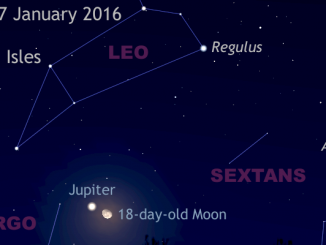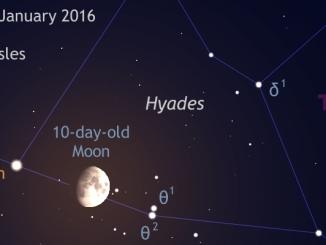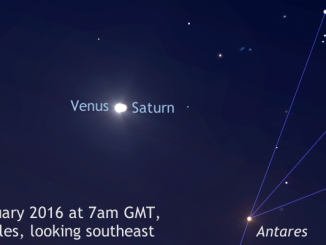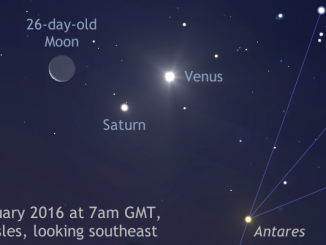
See the Moon meet Mars in the pre-dawn of 1 February
As avid skywatchers will already know, all of the bright naked-eye planets are currently visible in the pre-dawn sky — the first time in eleven years that such an alignment has occurred. At 6am GMT on Monday, 1 February, the last quarter Moon in the constellation Libra lies just 2½ degrees from magnitude +0.8 planet Mars low in the south for UK observers.









